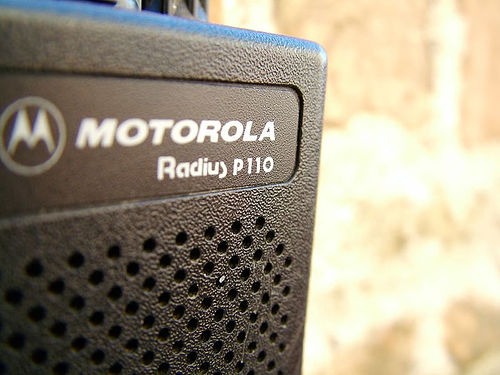What is the Average Communication Range of UHF Radios?
11th Feb 2014

photo by Alessio Michelini @ Flickr
Determining the average communication range of UHF two-way radios can be tricky. A number of variables can and do affect the distance-range of radio broadcasts, making it necessary to examine just what can interfere with or boost the range of a UHF radio. A brief tutorial on how Ultra High Frequency (UHF) radio waves travel from the moment a transmission is sent demonstrates why more info is necessary to understand how communication ranges can fluctuate.
Line-of-Sight
A term that inevitably pops up when discussing UHF radio range is "line-of sight propagation," or "line-of-sight path." The optimal range for two-way radio transmissions would ideally be one in which there's a clear shot between User A, who's standing on a mountaintop, and User B, who's either in a valley below or standing on another mountaintop a few miles away. Line-of-sight refers to the distance between radio-to-radio points in a transmission path. The clearer the line-of-sight path, the better the range; add obstacles or other obstructions to the line-of-sight path, such as buildings, large trees, hills, mountains, high walls or the like, and radio waves are blocked, thereby shortening the range considerably.
Traveling a Straight Course on a Curved Planet
UHF is the designation given to shorter radio waves moving in concentric circles that fall within the 300 MHz to 3 GHz (or 3000 MHz) frequency range. Because UHF waves are short (much shorter than VHF waves), with enough power or wattage, they travel better inside buildings and can penetrate non-metallic objects and travel around objects both indoors and outdoors. One factor to consider when attempting to visualize traveling UHF radio waves is that the waves travel in a straight line (most of the time, though radio waves can reflect or bounce off objects, putting a crimp in that "straight-path" rule). We know Earth is curved, so waves that follow a straight path over a curved horizon will continue beyond the curvature of the horizon into space unless stopped before they do by, say, a very tall radio antennae or User B standing on a mountaintop with a two-way transceiver, ready to intercept the radio wave following a straight course.
A handy formula exists for calculating the line-of-sight distance to the horizon: horizon in kilometers = 3.569 times the square root of the antenna height in meters. Using a calculator, let's test out the formula. A 6-foot antennae (or someone 6 feet tall holding a UHF two-way radio) equals 1.83 meters. The square root of 1.83 equals 1.35. 1.35 multiplied by 3.569 equals 4.83 meters to the horizon, or -- rounded -- 3 miles. Using line-of-sight, the horizon is 3 miles away from a 6-foot antennae. Add another upright 6-foot antennae in a straight line 3 miles from the horizon point we just calculated, and you can theoretically send and receive transmissions from the first antennae to the second antennae for a total of 6 unobstructed miles of "radio horizon." A range of 4 to 6 miles is average for a relatively clear line-of-sight path. Add obstructions or interference, and most UHF two-way radios have a realistic range of between 1 to 4 miles.
Tips for Maximizing Communication Range of UHF Radios
Enhance your two-way radio's range by:
- Moving away from metal buildings or structures
- Elevating the radio as high as possible
- Communicating over an unused channel to eliminate interference
- Making sure radio batteries are fresh or well-charged
- Using a repeater to boost the range
